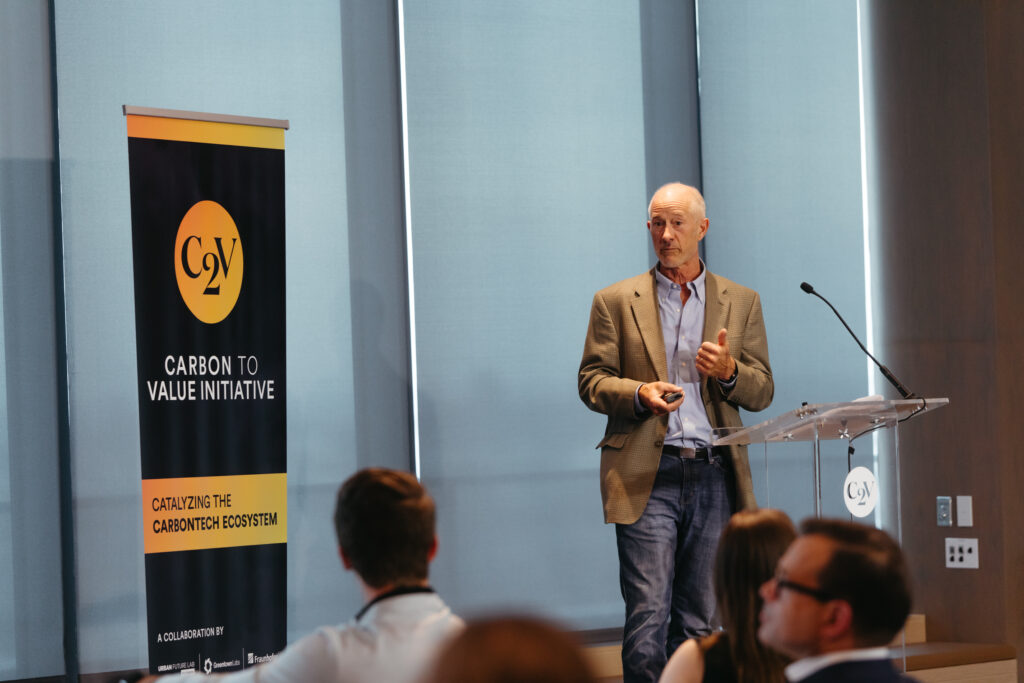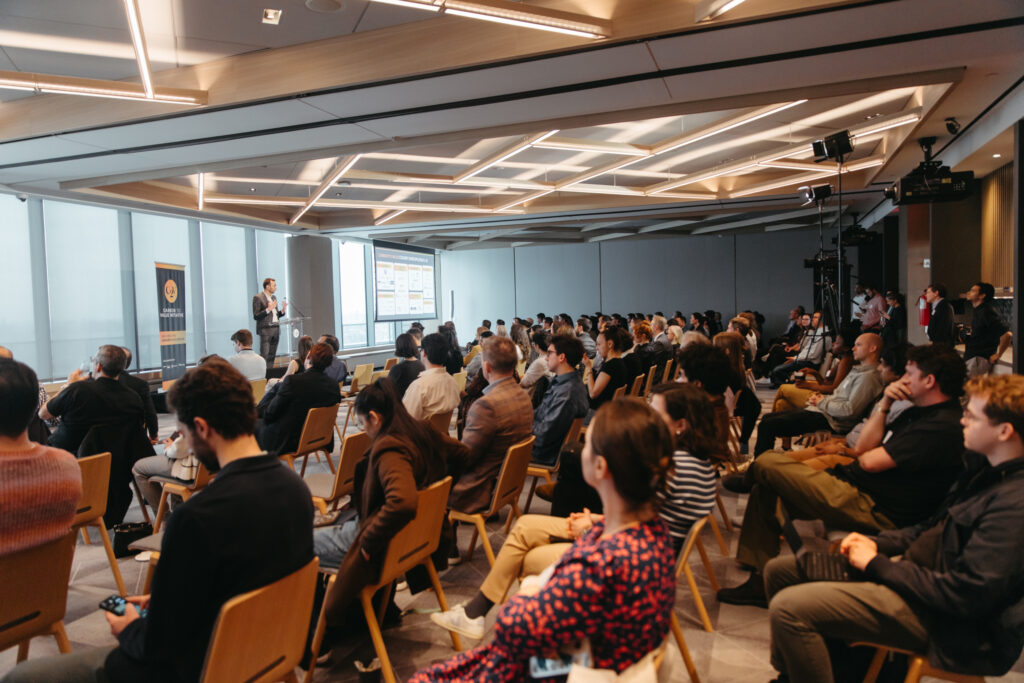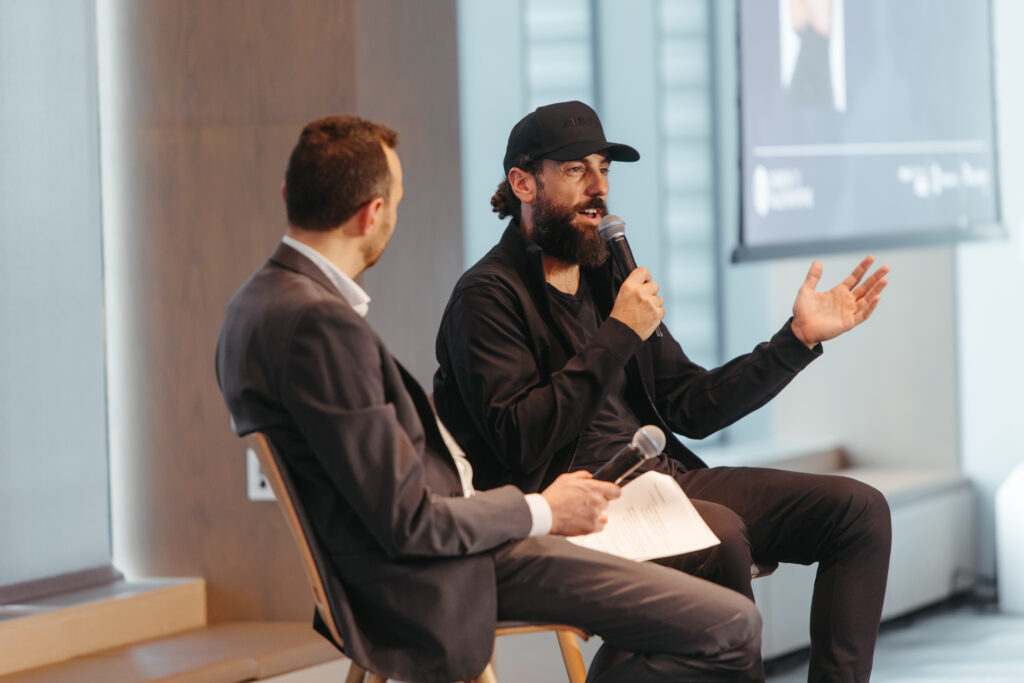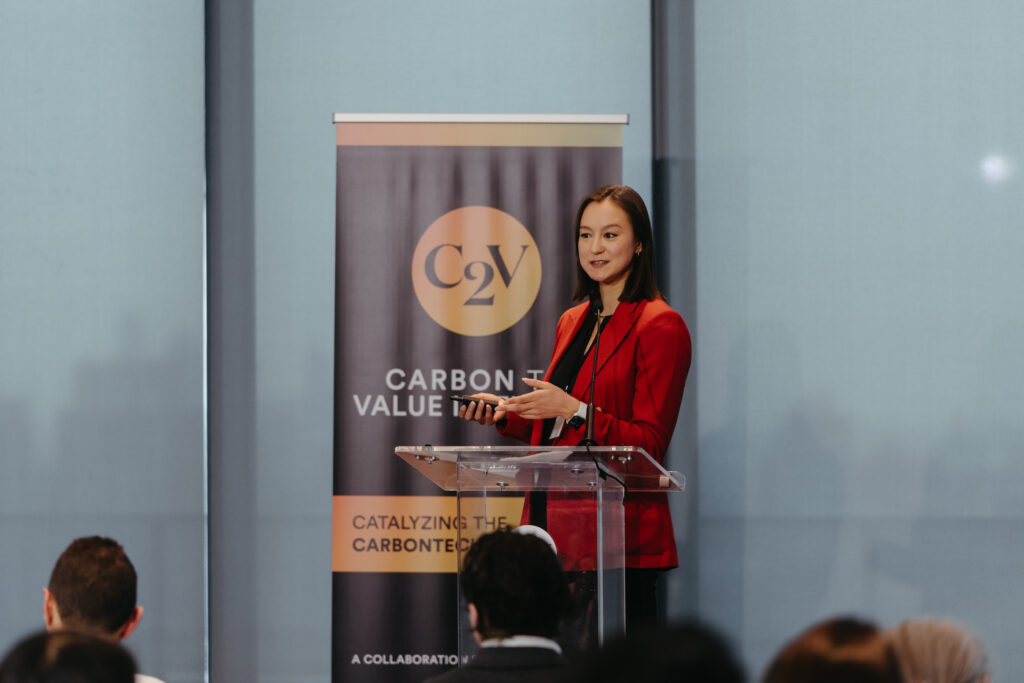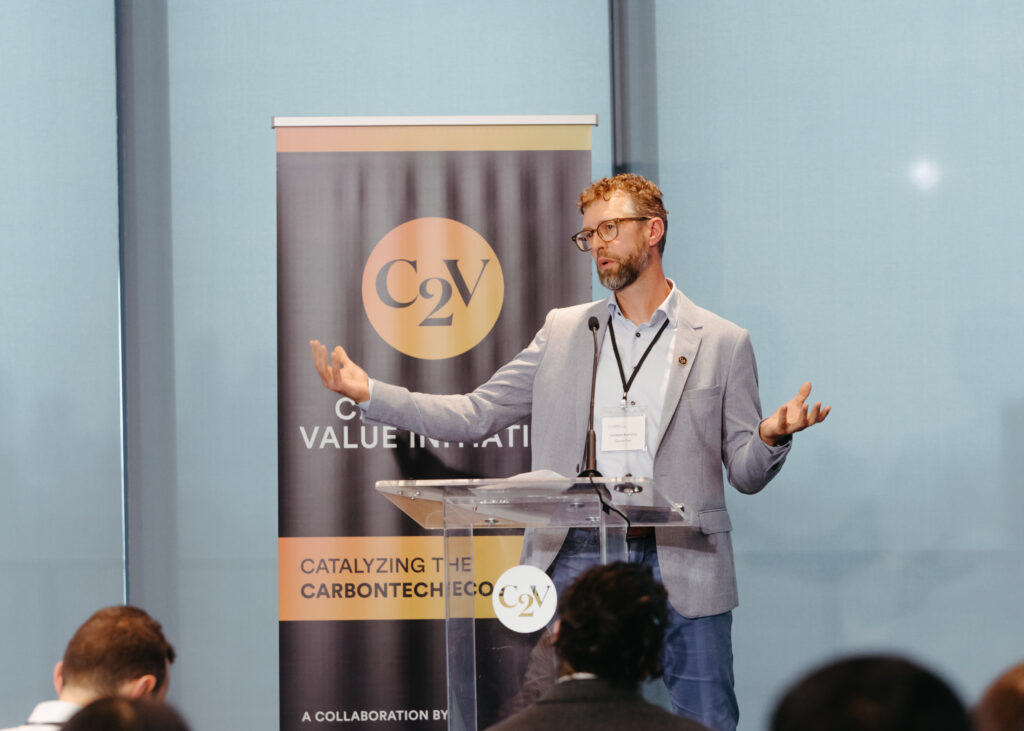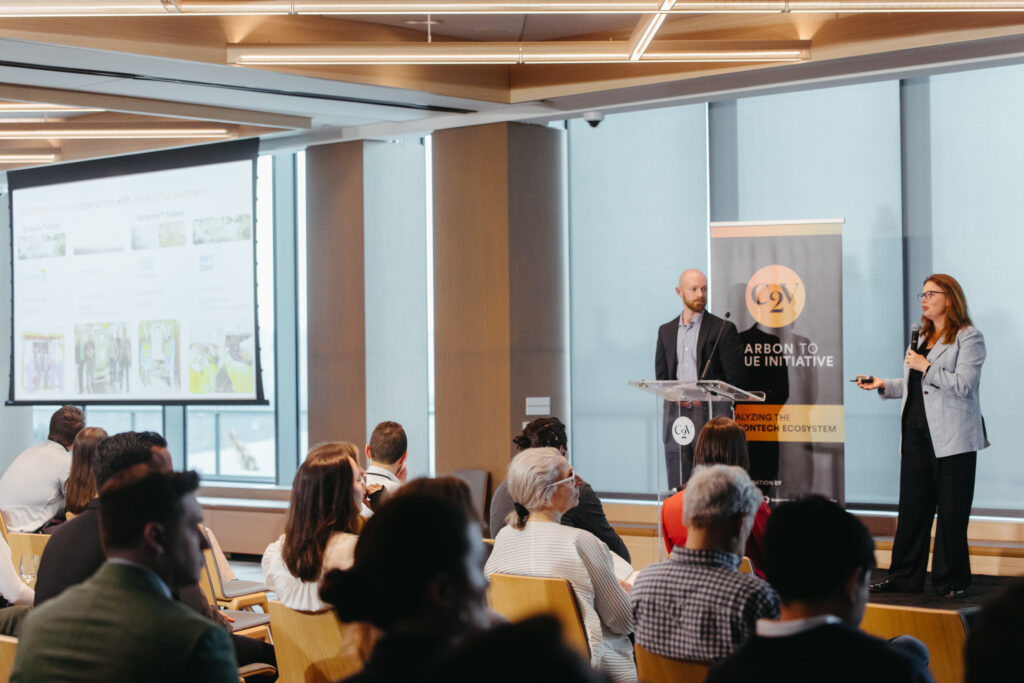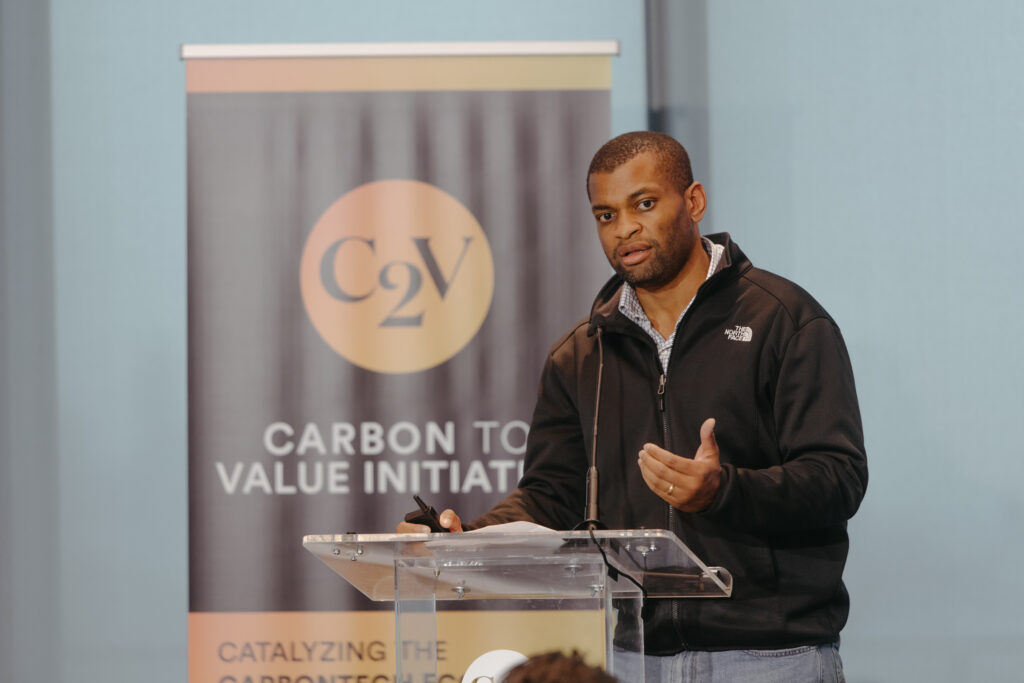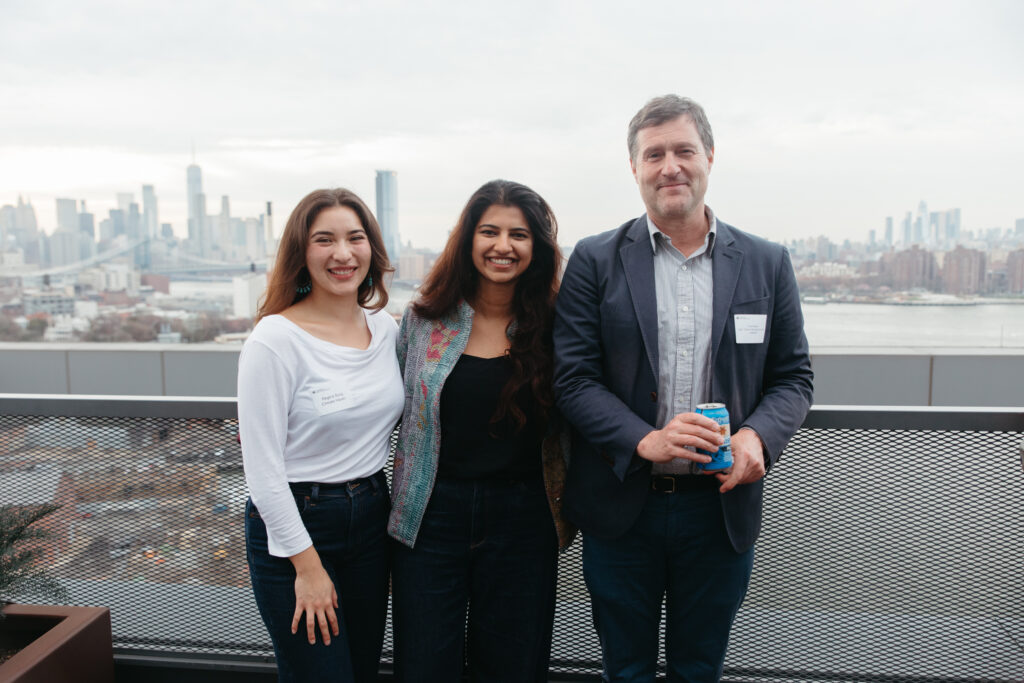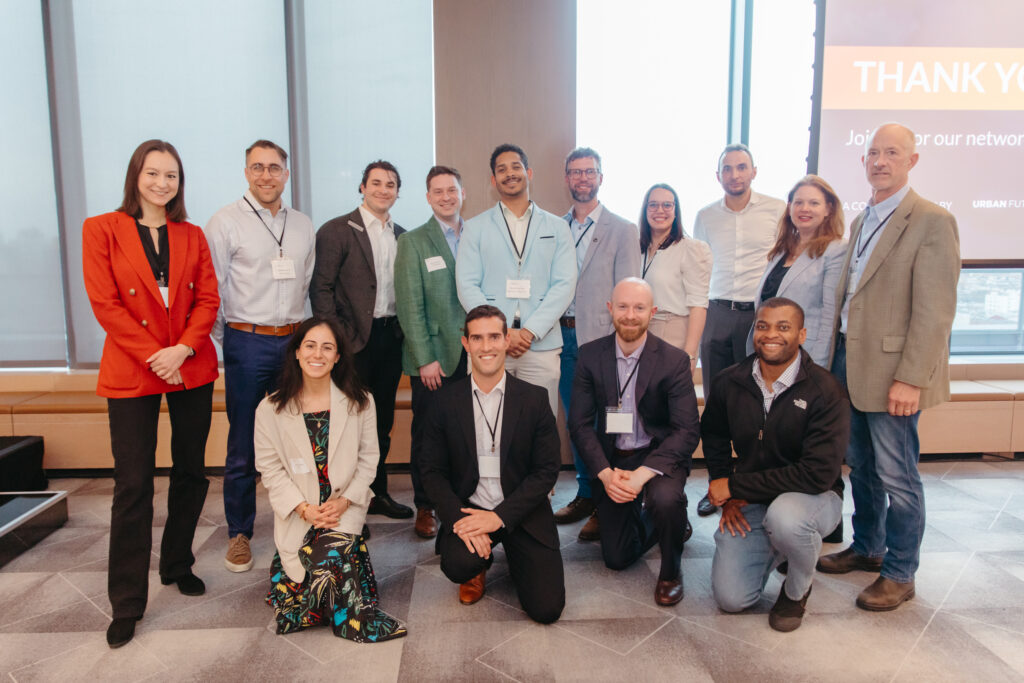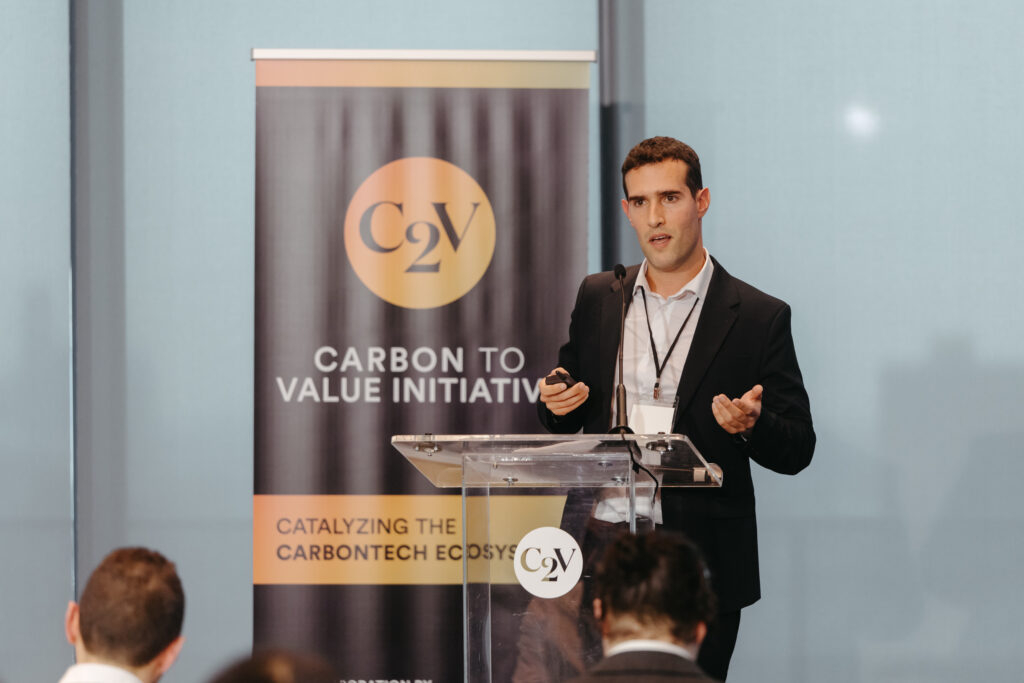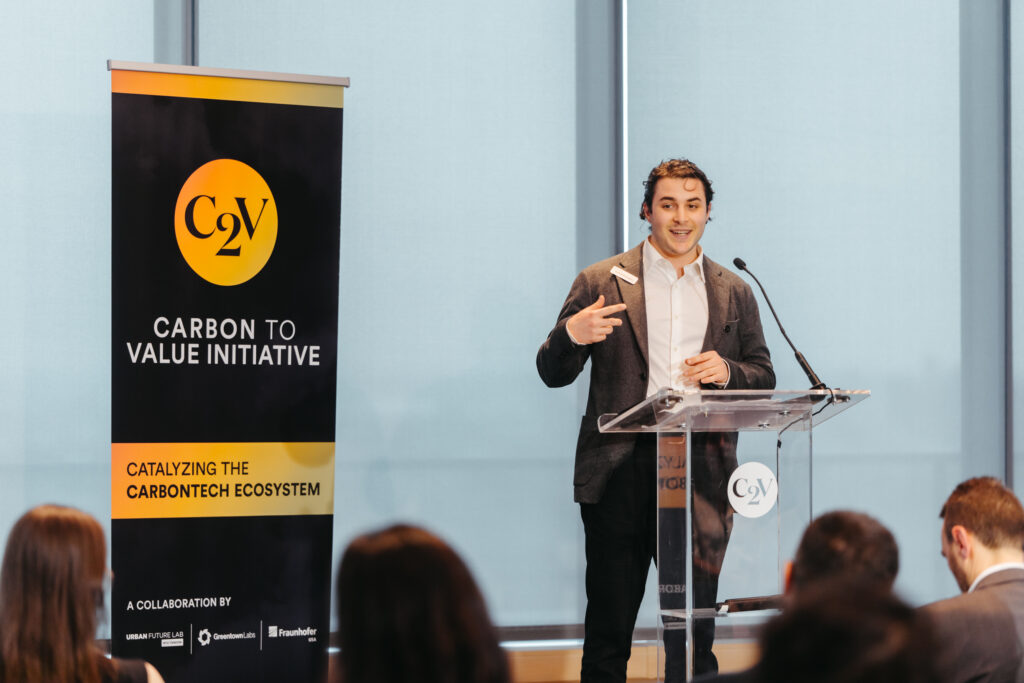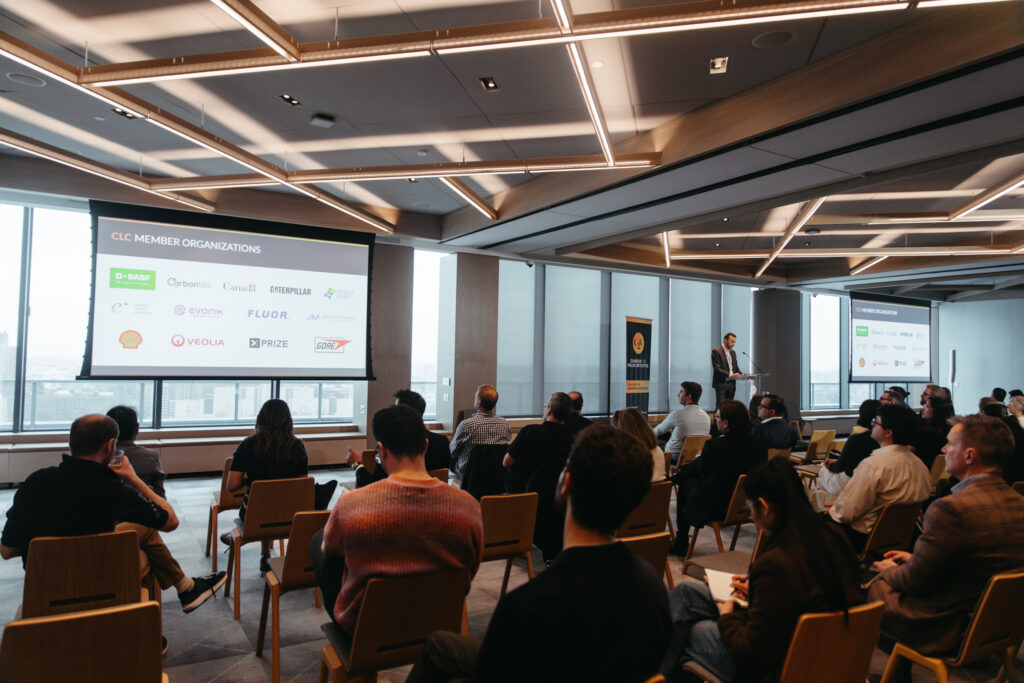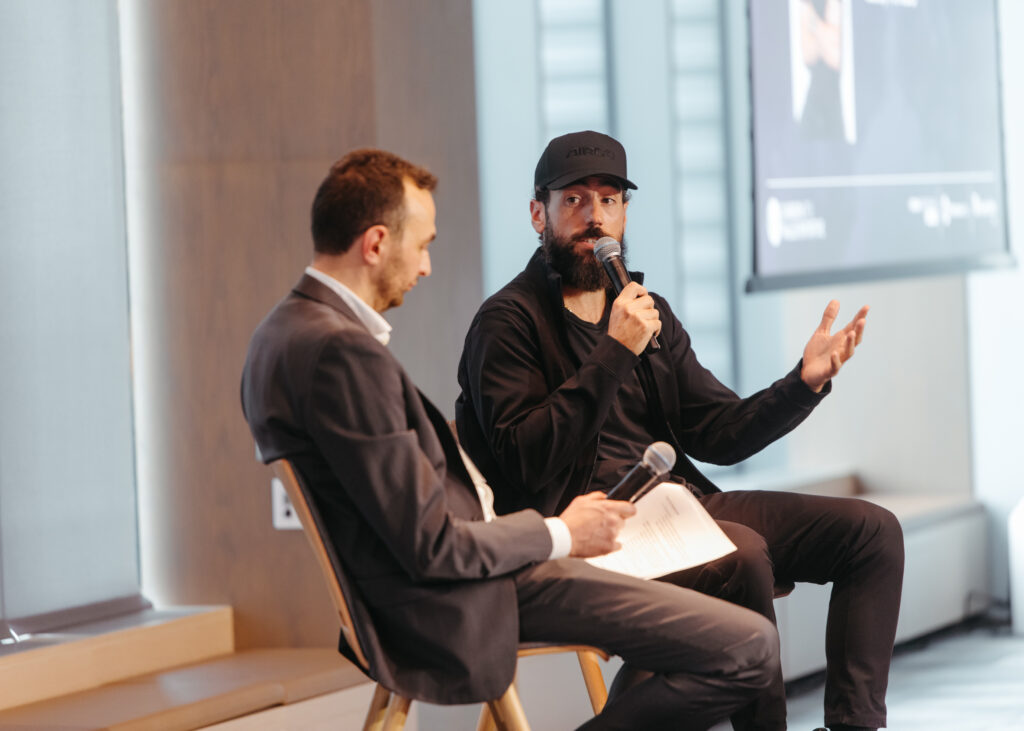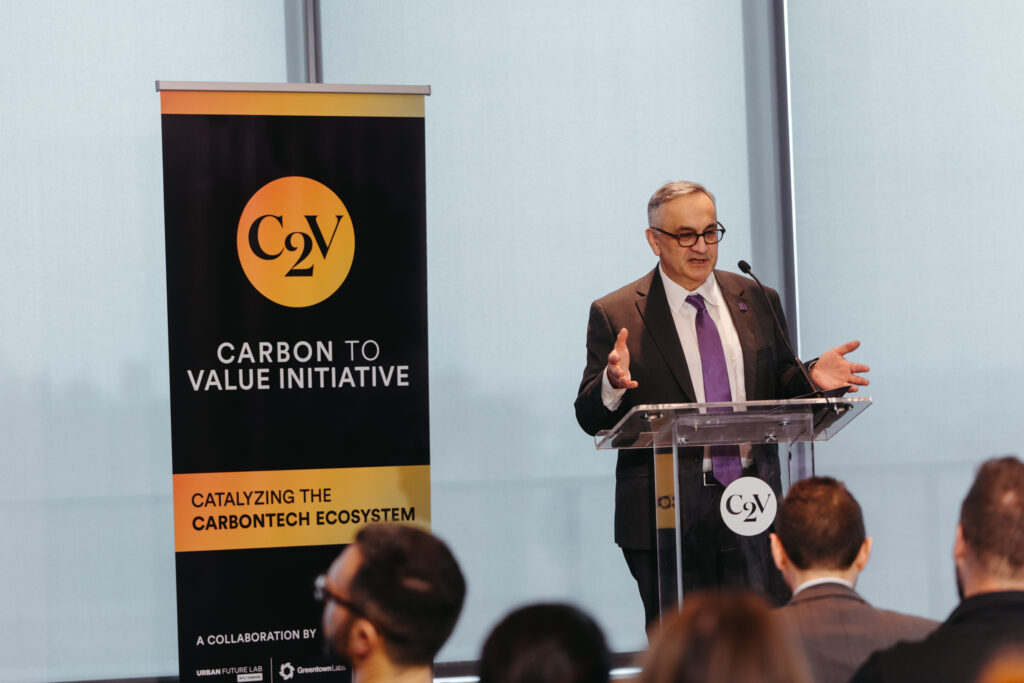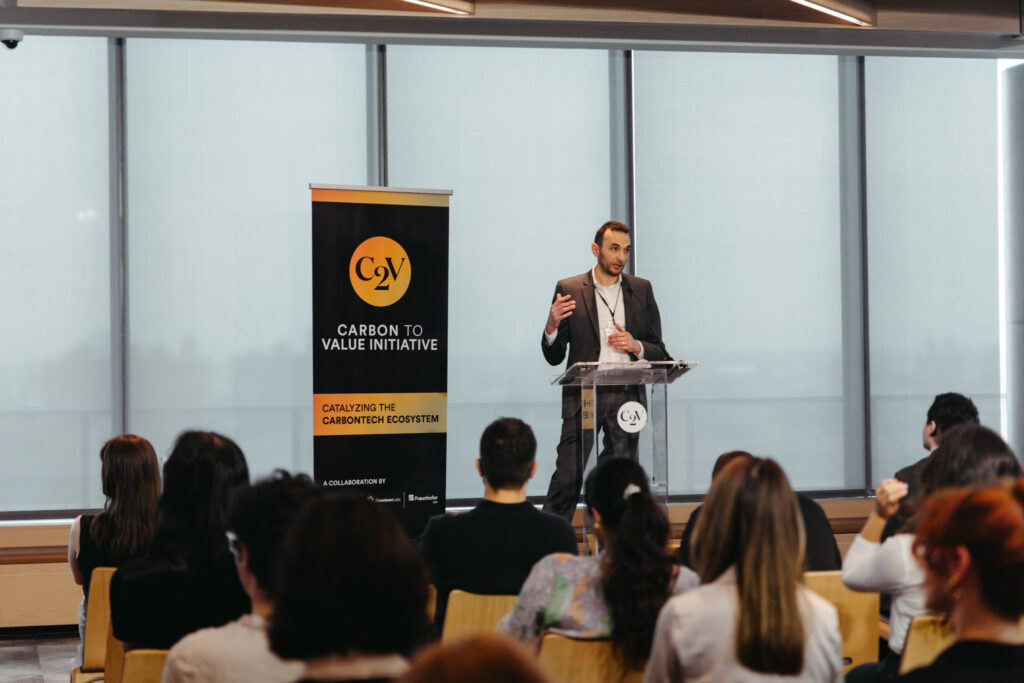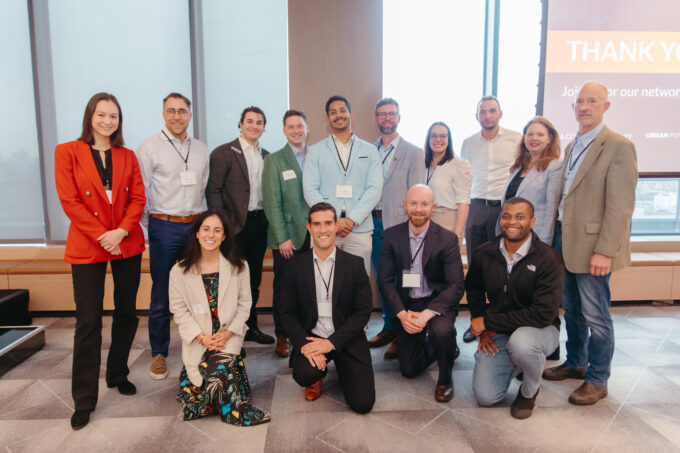The Carbon to Value Initiative (C2V Initiative) is catalyzing the carbontech ecosystem with a dynamic startup accelerator program and a slate of industry leaders capable of catapulting innovations into the market. The program wrapped up its fourth year this spring with a dive into the pilots, co-development agreements, and other collaborations formed over the past six months.
Led by the Urban Future Lab at NYU Tandon School of Engineering, Greentown Labs, and Fraunhofer USA, the C2V Initiative brings together innovative carbontech startups and a group of corporate, nonprofit, and government leaders—known as the Carbontech Leadership Council (CLC)—who foster commercialization opportunities and identify avenues for technology validation, testing, and demonstration. Current CLC members include BASF, Carbon180, the Consulate General of Canada in New York, Caterpillar Inc., CO₂ Value Europe, Energy Impact Partners, Evonik, Fluor, Johnson Matthey, Shell, Veolia, W. L. Gore & Associates, and XPRIZE.
The initiative’s fourth cohort included nine carbontech startups that were chosen in a highly competitive selection and deliberation process that saw more than 120 applications from 29 countries. Over the six-month accelerator, the startups collaborated with the CLC and received extensive mentorship to advance their commercialization efforts and de-risk their carbontech solutions; 24 advisors from the CLC were paired with the startups to offer hands-on expertise.
Since the C2V Initiative’s inception, the program has supported 35 groundbreaking startups that have raised over $580M in follow-on funding, leading to partnership engagements and 630+ business relationships, technology advancement, and industry growth. Ten startups have publicly announced partnerships with CLC members. Detailed results from Year 1, Year 2, and Year 3 are available.
Read about the Year 4 startups, their progress during the accelerator, and initial outcomes below, and check out session recordings from the C2V Initiative Year 4 Final Showcase here!
As always, this is just a fraction of the total outcomes that we expect from the program, which can sometimes take months or years of collaboration to bring to fruition—and often details are covered by non-disclosure agreements in the near-term.
Want to stay in the know with all future program outcomes or be the first to hear when applications open for Year 5 of the C2V Initiative? Sign up for the C2V Initiative’s newsletter. Interested in joining the CLC or supporting the initiative? Reach out here.
Ardent
Technology at a glance: Ardent, based in New Castle, DE, is a process-technology company that is developing membrane-based solutions for point-source carbon capture and other chemical separations.
Work with CLC members: Ardent and Evonik conducted a feasibility study on the integration of Ardent’s membranes with Evonik’s carbon-capture solvent through a collaboration between the engineering teams. The joint modeling work enabled Ardent and Evonik to identify potential promising synergies between their respective carbon-capture solutions and de-risk Ardent’s commercial viability.
“We’ve been able to benefit from the C2V program across a few different dimensions on our journey to commercialization,” says Ardent’s VP of Engineering Jon Kuriloff. “Working with our CLC advisors, we’ve gained new perspectives on markets and customers, and we’ve also been able to demonstrate some compelling economics for real-world decarbonization use cases. In the workshops, we’ve gained a lot of perspective on project finance and other topics that have helped to inform our commercial roadmap. And the broader ecosystem—the connections and the resources that have been provided to us—have been instrumental.”
Additional progress: Ardent is currently raising its Series B round.
CarbonBlue
Technology at a glance: CarbonBlue develops a chemical process that mineralizes and extracts CO2 from water, which then reabsorbs more atmospheric CO2. It’s headquartered in Haifa, Israel.
Work with CLC members: CarbonBlue collaborated with Fluor, Veolia, and Caterpillar during the accelerator. With guidance from CLC members, CarbonBlue pivoted its approach to better match its product to market needs. CarbonBlue reconfigured its system to more efficiently produce three valuable materials at low-to-negative carbon footprints—lime, high-quality precipitated calcium carbonate, and CO2—for broader commercial use.
Additional progress: CarbonBlue is running two pilots this year and preparing for commercialization next year.
MacroCycle
Technology at a glance: MacroCycle, located in Cambridge, MA, develops a chemical recycling process to turn polyethylene terephthalate (PET) and polyester-fiber waste into “virgin-grade” plastics without breaking it down.
Work with CLC members: MacroCycle worked closely with Evonik to explore the startup’s manufacturing strategy and evaluated whether the startup should build its own plant or initially prioritize contract manufacturing, ultimately settling on the latter option thanks to Evonik’s expertise. MacroCycle and BASF explored the potential for manufacturing collaboration, reactor modeling, and technology scaleup.
MacroCycle plans to continue collaborating with CLC members, exploring a potential supplier relationship with Veolia, a potential customer relationship with W.L. Gore, and potential engineering, procurement, and construction (EPC) support from Fluor.
“C2V came to be very valuable to us,” says the startup’s CEO and Co-founder Stwart Peña Feliz. “We won’t be doing this by ourselves, the C2V network is here to assist us—whether it’s investors teaching us how to get this project funded, potential suppliers that are already collecting this waste, potential customers that can utilize our recycling alternatives, or EPC firms that can help us scale up once we decide to build our industrial plant. We’re thankful for the support and the network.”
Additional progress: During the program, MacroCycle closed a $6.5M seed financing round. The round was led by Greentown partner Clean Energy Ventures and Volta Circle, with participation from KDT Ventures and Neotribe Ventures.
Maple Materials
Technology at a glance: Maple Materials develops an electrolysis process to convert CO2 into graphite and oxygen. The startup is based in Richmond, CA.
Work with CLC members: Maple Materials has applied for a U.S. Department of Energy (DOE) SBIR grant with a letter of support from Evonik. Evonik also introduced Maple Materials to the University of Duisburg-Essen, and there are discussions to collaborate on the development of silicon-carbon anode materials. Meanwhile, Maple Materials collaborated with Caterpillar to identify CO2 sources that could serve as a feedstock to produce the startup’s graphite.
Maple Materials is also collaborating with Fraunhofer USA to co-develop cathode materials for lithium-sulfur batteries. This partnership is ongoing with a joint DOE grant application.
“Our time at C2V was really useful, really valuable, and we’re excited to continue engaging with the CLC partners,” says the startup’s CEO and Co-founder Drew Reid. “We’re excited to have found new partners to help us expand our product portfolio.”
Additional progress: Maple Materials has signed a materials-evaluation agreement with “a leading EV company.”
Oxylus Energy
Technology at a glance: Oxylus Energy, located in New Haven, CT, develops a direct electrochemical process to convert CO2 into fuels and chemical feedstocks, such as methanol.
Work with CLC members: Oxylus Energy is working with Johnson Matthey on an $8M DOE-funded pilot going live next year. It also refined its value proposition and development roadmap with help from Evonik, Veolia, CO2 Value Europe, and XPRIZE. Oxylus Energy worked closely with BASF and Evonik to learn the ins and outs of the methanol-production industry, market, development pathways, and potential product applications for green methanol. It also gained critical insights from Johnson Matthey experts on catalyst scale-up and electrolyzer manufacturing.
Phlair
Technology at a glance: Phlair develops a renewable-energy-powered direct-air-capture (DAC) system using an electrochemical process for acid and base generation. Phlair’s DAC facility in Canada is poised to remove 20,000 tons per year starting in 2027 and will be the world’s first DAC plant powered by behind-the-meter solar energy. The startup is headquartered in Munich, Germany.
Work with CLC members: Fluor advised Phlair on EPC selection and development for the Canada project. The startup deepened its existing relationship with Shell, exploring more ways to collaborate on future projects. Phlair also conducted a pilot in Munich during the accelerator, utilizing membranes from W.L. Gore.
Additional progress: Phlair secured a $30.6M offtake agreement with Frontier to remove 47,000 tonnes of CO2 between 2027 and 2030.
RenewCO2
Technology at a glance: RenewCO2 is developing an electrochemical process to convert CO2 into fuels and chemicals, such as sustainable aviation fuel or propylene glycol. It’s based in Somerset, NJ.
Work with CLC members: RenewCO2 worked with Johnson Matthey to secure a catalyst supply to test on its process and deepened its already existing relationship with Shell through the program. RenewCO2 and Evonik are also planning collaborations related to catalysts, membranes, and downstream products.
Additional progress: RenewCO2 is exploring possible synergies with cohort members and with several of Greentown’s corporate partners across the energy and agriculture sectors.
Seabound
Technology at a glance: Seabound, based in London, England, builds modular, scalable carbon-capture equipment for ships.
Work with CLC members: Seabound conducted a feasibility study with Shell focused on tanker ships and explored testing the Seabound Container system on a large-scale Cat Marine engine at a Fraunhofer facility in Germany. It is also participating in the working groups of CO2 Value Europe. Upcoming priorities for potential CLC collaboration include exploring a joint product offering to marine-engine clients, sorbent production scale-up, and onshore project development.
Additional progress: “This year, we’re delivering the first full-scale Seabound containers to customers and the C2V program has provided us with meaningful connections and industry knowledge as we approach this critical moment in our growth,” says Seabound’s CEO and Co-founder Alisha Fredriksson. “We secured our first order just a few months ago from one of the world’s largest cement companies. We’ll be capturing CO2 on a ship that carries cement, and then they will buy the resulting limestone from us and put it into their cement kiln.”
Seabound is also conducting its second paid pilot and preparing to raise a Series A.
Secant Fuel
Technology at a glance: Secant Fuel—located in Montreal, Quebec, Canada—develops a one-step thermo-catalytic process that converts flue gas into syngas.
Work with CLC members: Secant Fuel created a development roadmap with guidance from Johnson Matthey and will be co-developing catalysts with the corporate. Secant Fuel worked closely with BASF to analyze the piloting of their technology in conjunction with BASF’s steam-methane-reforming process, and had detailed discussions around the value proposition of Secant Fuel’s technology compared to other utilization technologies. Secant Fuel worked with Evonik to understand toll manufacturing and catalyst scaling, the markets around syngas and other synthetic fuels, and refining its value proposition. Other conversations with Caterpillar, Veolia, and Fluor were helpful in understanding market dynamics and various business models.
“We got a lot of different things out of C2V,” says Secant Fuel’s CEO Jochem Kamstra. “C2V is a well known program, and one of the examples is that we’re now talking to a sustainable aviation fuel developer in Quebec for a project. Our three partners were Evonik, BASF, and Johnson Matthey, and we hope to move forward with them.”
Additional progress: Secant Fuel is launching its first pilot this summer and just opened its seed round.
